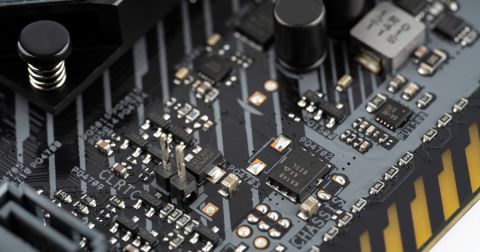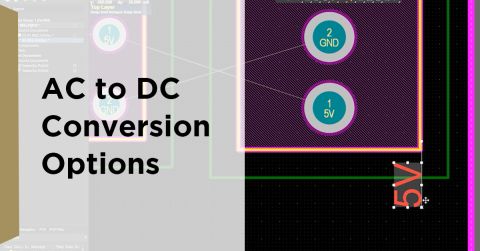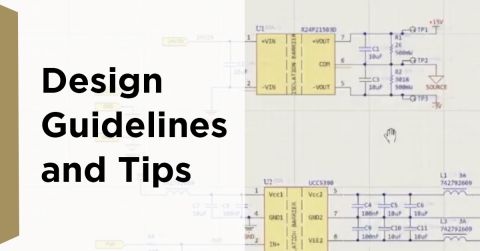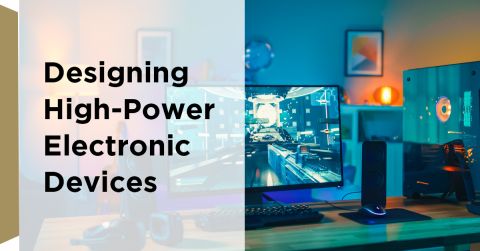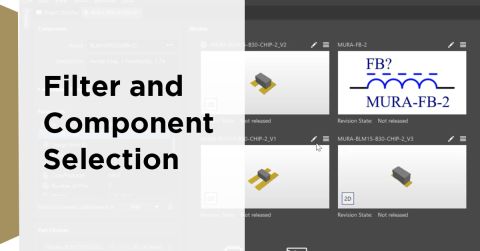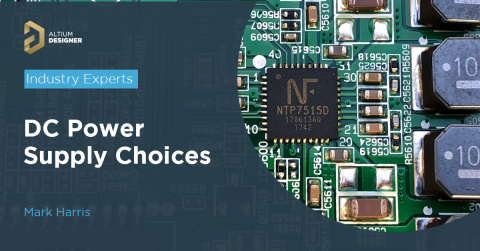Finding the Right Solar Solution for your Outdoor Embedded Devices

Outdoor embedded devices have become a mainstay in our society. We rely on wireless gate openers, cameras, or other various electronic devices. We don’t always have the luxury to keep them plugged into a wall outlet so we turn to alternative power sources. In this article we will look at various solutions for powering up your devices using the sun ranging from designing a custom product to purchasing something that works right out of the box. We’ll look at the pros and cons of all options to help you determine what’s the right solution for you.
First iteration: A complete prototype
If you recall in Prototyping a Solar Solution for your Outdoor Embedded Device we reviewed the following circuit that was a mix of evaluation boards, cheap power converters, and custom electronics:

Figure 1: Original concept design
While the solution worked it was clunky, messy, and would have required much time and effort to get into a nice, neat little package. I needed this for my outdoor cameras so it needed to be small and relatively easy to keep together. Designing the whole thing from scratch would have been very cost prohibitive so I decided to go towards the opposite spectrum and find the cheapest and simplest option out there.
Iteration #2: Using the cheapest COTS solution out there
Fed up with my clunky design I ventured out to find the cheapest and simplest commercial off the shelf (COTS) solution out there. I stumbled upon a lighting deal for a Solar Charger Battery Pack priced at around $15. For $15 you can’t go wrong, especially at a whopping 20,000 mAh battery capacity. The only caveat I was worried about was that the maximum output from the solar panel itself was 200 mA at 5V. I ran some tests on my camera and validated that its sleep current (where it sits 99% of the time) is < 10 mA and the actual operating current averaged at 200 mA for less than 5 seconds. This meant that if I could charge up only for an hour or two a day (in full sunlight) I should be fine.
It turned out that the 200 mA advertised was in direct sunlight only. That meant that it didn’t really charge at all when in the shade. In contrast to the Sunny Buddy from Sparkfun this device was not able to maximize the low outputs from the solar panel and charge up the battery in non-ideal conditions. It seemed like the output power in a shady spot wasn’t enough for the charging circuit to properly function. Some identical products state that in order to fully charge a depleted battery (using just the solar panel) you must place it in direct sunlight for 8 days.
So let’s assume I found a sunny spot around my house to keep this device charged. There was still one another issue that I discovered with this and all other power banks. Almost all USB power banks (solar or not) have a built-in feature that they turn off if not actively loaded past a certain threshold. This means that if you don’t have a device plugged into your power bank that isn’t drawing a fair amount of current (like charging a cellphone) it will shut off the output. I call this a “feature” because it ensures that your power bank doesn’t leak current when it’s not supposed to (i.e. discharging for no reason). The only problem with this is that microcontrollers tend to use very little current (especially when in sleep mode). If you plug in a microcontroller into a power bank you’ll notice that the output gets shut off after a few minutes. The only way to overcome this is to actively load down the power bank using one of the USB ports. Initially I hooked up a DC electronic load to the device but it was bulky and impractical so I attached an LED (with a current limiting resistor) to a USB breakout board to achieve the same thing. I wanted to draw roughly 30-50 mA to keep the power bank on.

Figure 2: Cheap solar power bank option

Figure 3: LED load on power bank
This was a promising fix but as I discovered days later the lack of direct sunlight resulted in my power bank discharging at a faster rate than it could charge. By day 4 the power bank had fully discharged. After a few weeks of the same results I decided to move onto the next iteration.
Iteration #3: Using Project Specific Development Boards
After my initial experience with the development boards from Sparkfun and Adafruit I was reluctant to go on the hunt for yet another one. Luckily I came across the Solar Power Manager from DFRobot. It had everything that I put together in my initial prototype and then some. It even had a nice little USB female connector at the edge of the board so you can plug whatever USB device into you that you wish. Since I already had a nice stash of 6V solar panels and a plethora of 3.7V LiPo batteries this was a total win for me (especially for $8 a board on Mouser). My new setup looked like this:

Figure 4: Using Development board from DFRobot
After several weeks of testing my setup this board was able to keep my outdoor solar camera powered 24 hours a day (even in a shady spot). Since it’s a bare board consisting of a bunch of LED indicators I can pop those off and use them as digital inputs to a microcontroller to gather some charging stats in the future. For folks interested in tinkering and doing a little work to put together their setup this was the optimal choice.
Iteration #4: Out of the Box Solutions
No comparison would be complete without an out of the box solution. I wanted to purchase something that would enable me to plug in and go. This all-in-one solar battery solution definitely fits the bill. While the description advertises it to be used with outdoor cameras it can actually be used to power any USB device (such as a NodeMCU or Arduino based project). This made my hookup diagram extremely simple:

Figure 5: Using a complete out of the box solution
Just like the DFRobot board this one worked without any hiccups. It arrived fully charged and, even in the shade, it worked flawlessly keeping my outdoor camera powered without any downtime. The only downside to this product was that it was a completely closed solution. Even the screws weren’t normal screws so it made it extremely challenging to take apart. If you’re interested in tinkering and understanding even the basic components that make up this solution then the DFRobot path is likely the one for you. If you want something right out of the box that you don’t have to mess with then this is the right choice. Either way you can’t go wrong.
Conclusion
In this article we looked at four different solutions that keep your embedded devices powered by harnessing the energy of the sun. The options ranged from kludging together different electronics and kits to complete out of the box solutions. At this point the reader should have a decent understanding as to which solution will work best for them. The next step would be to pick up some or all of these solutions, put them together, and start playing around with their outdoor embedded projects.

